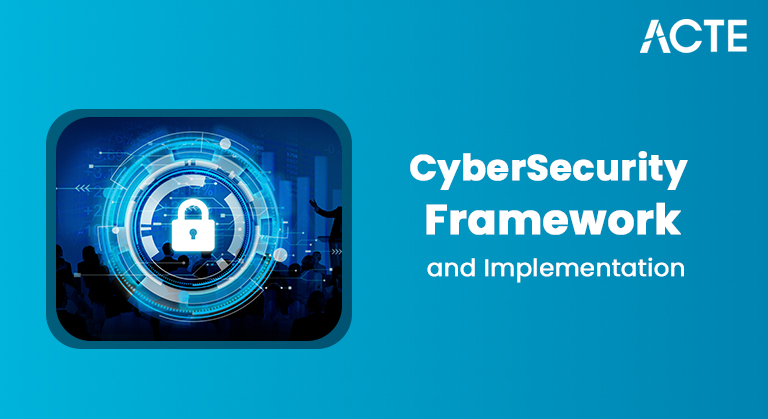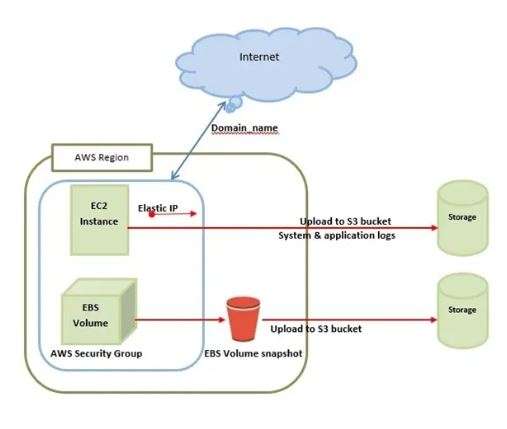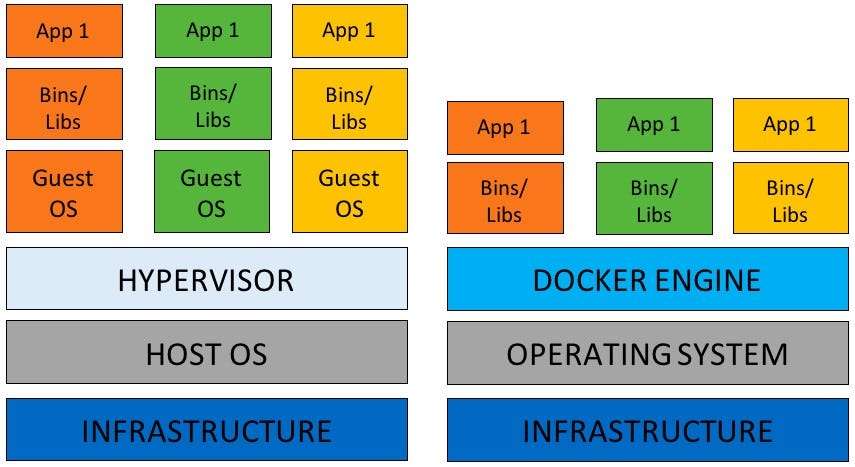
- Introduction
- What is a Hypervisor?
- Types of Hypervisors
- Hypervisor vs Virtual Machine Monitor (VMM)
- Hypervisors in Cloud Architecture
- Benefits of Hypervisor in Cloud Computing
- Hypervisor Challenges
- Hypervisor in Virtualization vs Containerization
- Future Trends in Hypervisor Technology
- Hybrid Cloud Disaster Recovery (DR) and Business Continuity
- Conclusion
Introduction
Virtualization has become a cornerstone of modern computing, enabling businesses to optimize their IT infrastructure, enhance scalability, and improve resource utilization. At the core of virtualization technology lies the hypervisor, a software layer that allows multiple virtual machines (VMs) to run on a single physical machine. By abstracting hardware resources such as CPU, memory, and storage, hypervisors provide isolation between virtual environments, ensuring secure and efficient operations. There are two primary types of hypervisors: Type 1 (bare-metal) hypervisors, which run directly on physical hardware, and Type 2 (hosted) hypervisors, which operate within an existing operating system. Both types play a crucial role in various computing environments, from enterprise data centers to Cloud Computing Course platforms. As organizations shift toward hybrid and multi-cloud architectures, hypervisors continue to evolve, integrating with advanced technologies like containerization, AI-driven workloads, and edge computing. This guide explores the fundamentals of hypervisors, their benefits, challenges, and their role in cloud computing. Additionally, we will examine future trends and how hypervisors facilitate seamless hybrid and multi-cloud operations.
Gain in-depth knowledge of Cloud Computing by joining this Cloud Computing Online Course now.
What is a Hypervisor?
A hypervisor is a software layer that enables multiple virtual machines (VMs) to run on a physical host machine. It allows multiple operating systems to share the resources of a single physical machine by abstracting and managing hardware resources such as CPU, memory, and storage. The hypervisor acts as an intermediary between the hardware and the operating systems, ensuring that each virtual machine operates independently and securely. There are two main types of hypervisors: Type 1 (bare-metal) and Type 2 (hosted). The hypervisor is a critical component in virtualization, which allows organizations to run multiple workloads on a single physical machine, providing better resource utilization, isolation, and management.
Types of Hypervisors
There are two primary types of hypervisors, each serving a different purpose:
Type 1 Hypervisor (Bare-Metal):
A Type 1 hypervisor runs directly on the physical hardware (the host machine) without the need for a host operating system. Ansible Playbooks Explained Guide provides better performance and scalability, as the hypervisor has direct access to the hardware resources.
Examples:
- VMware ESXi
- Microsoft Hyper-V
- Xen
- KVM (Kernel-based Virtual Machine)
- Better performance and resource efficiency.
- More secure, as there is no intermediary host OS.
- Suitable for data centers, cloud environments, and large-scale virtualization.
- VMware Workstation
- Oracle VirtualBox
- Parallels Desktop (for macOS)
- QEMU (on Linux)
- Easier to set up and use on personal computers or laptops.
- More suitable for development, testing, and smaller environments.
- Allows running multiple OS instances on a desktop machine.
- VMM focuses on managing virtual machines and their resources.
- A hypervisor is a type of VMM that can directly interface with hardware, especially in the case of Type 1 hypervisors.
- Hypervisors allow cloud providers to run multiple VMs on a single physical server, which maximizes resource utilization and reduces costs.
- Cloud platforms like Amazon Web Services (AWS), Microsoft Azure, and Google Cloud rely on hypervisors to provide virtualized computing resources to customers.
- Hypervisors in cloud computing manage resources such as CPU, memory, and storage. They dynamically allocate resources to VMs based on demand and can automatically scale up or down as required.
- Hypervisors help ensure that cloud providers can offer elastic services, such as Infrastructure as a Service (IaaS), where users can Overview of Service Mesh and manage VMs on demand.
- In cloud environments, hypervisors ensure that VMs are isolated from each other, providing secure multi-tenancy. Each tenant (customer) has their own virtualized environment, with no interference from other tenants.
- Hypervisors are often integrated with orchestration tools (e.g., Kubernetes, OpenStack) to automate the provisioning, scaling, and management of VMs and containers in cloud environments.
- Resource Efficiency:Hypervisors enable efficient utilization of physical hardware by running multiple virtual machines on a single server, reducing the need for additional physical hardware. This results in cost savings and better resource utilization.
- Isolation and Security: Hypervisors provide isolation between VMs, ensuring that applications and services running on different VMs do not interfere with each other. This isolation enhances security, as one compromised VM cannot affect other VMs.
- Scalability and Flexibility: Hypervisors make it easy to scale. VMs can be quickly provisioned or decommissioned based on demand, allowing Cloud Computing Course to offer flexible and elastic services to customers.
- High Availability and Reliability: Hypervisors provide high availability by enabling VMs to be moved between physical servers without downtime. In the event of hardware failure, VMs can be quickly migrated to another server, ensuring that workloads remain operational.
- Cost Savings: By running multiple VMs on a single physical server, organizations reduce hardware costs and improve the overall cost-effectiveness of their cloud infrastructure.
- Hypervisor and Virtualization: Hypervisors manage virtual machines (VMs), where each VM runs a full guest operating system (OS) along with the application. VMs are resource-intensive because each VM requires its own OS, which consumes significant memory and Improve Code Quality with CI CD Automation. Hypervisors allow full OS-level isolation, providing strong separation between applications but at a cost of performance due to the overhead of running multiple full operating systems.
- Containerization: Containers, on the other hand, share the host system’s OS kernel and run isolated user-space instances. Containers are much more lightweight and efficient compared to VMs because they don’t require a full OS for each instance. Containers provide faster startup times and less overhead, making them ideal for microservices, scalable applications, and cloud-native environments. Key Difference:
- VMs managed by hypervisors are suitable for running applications that require full OS isolation and resources.
- Containers are more efficient and lightweight for running microservices and applications that can share the same OS kernel, with less overhead.
Enhance your knowledge in Cloud Computing. Join this Cloud Computing Online Course now.
Type 2 Hypervisor (Hosted):
A Type 2 hypervisor runs on top of an existing operating system (host OS). It relies on the host OS for resource management and system calls, which can result in slightly reduced performance compared to Type 1 hypervisors.
Examples:
Key Benefits:

Hypervisor vs Virtual Machine Monitor (VMM)
The terms hypervisor and Virtual Machine Monitor (VMM) are often used interchangeably, but they refer to slightly different concepts:
Virtual Machine Monitor (VMM): VMM is a software component responsible for managing the execution of Location Exploring the Cloud First Strategy . It provides the virtualized environment for the operating systems running inside the VMs. VMM ensures that each VM has access to CPU, memory, and other resources, while also isolating them from one another.
Hypervisor:A hypervisor is essentially a specific type of VMM. It is responsible for managing the lifecycle of VMs, allocating resources, and ensuring the correct execution of virtualized environments. In some contexts, hypervisors and VMMs are the same, but hypervisor refers more specifically to the software or firmware responsible for managing VMs.
Key DifferenceHypervisors in Cloud Architecture
Hypervisors play a critical role in cloud architecture by enabling virtualization and multi-tenancy in cloud environments. In cloud computing, hypervisors are used to create and manage virtual machines that run various workloads, providing users with isolated computing environments.
Virtualization in the Cloud:
Resource Management and Scaling:
Isolation and Multi-Tenancy:
Cloud Automation and Orchestration:
Aspiring to lead in Cloud Computing? Enroll in ACTE’s Cloud Computing Master Program Training Course and start your path to success!
Benefits of Hypervisor in Cloud Computing
Hypervisors provide several key benefits in cloud computing environments, making them fundamental to the infrastructure that supports virtualized resources:
Hypervisor Challenges
While hypervisors provide numerous benefits, several challenges come with their use, especially in large-scale cloud environments: Hypervisors introduce some performance overhead because of the extra layer of virtualization between the hardware and the operating system. This overhead can affect the performance of VMs, particularly in resource-intensive applications. Hypervisors manage the distribution of resources across multiple VMs. If too many VMs are running on the same host, resource contention (e.g., CPU, memory, storage) can occur, which may lead to performance degradation. Managing and configuring hypervisors at scale can be complex, especially in cloud environments with thousands of VMs. Automation tools like OpenStack and Kubernetes are often required to simplify management. While hypervisors provide isolation between VMs, Future Ready SAAS for Your Business in the hypervisor itself can allow attackers to breach this isolation. Ensuring the security of the hypervisor and keeping it up to date with patches is essential to maintaining a secure environment. Hypervisors provide great flexibility within virtualized environments, but they may have limitations when it comes to certain specialized use cases, such as running applications with very specific hardware requirements (e.g., GPUs for machine learning).

Hypervisor in Virtualization vs Containerization
While hypervisors are fundamental to virtualization, they differ significantly from containerization technologies, like Docker, in terms of architecture and resource management.
Want to ace your Cloud Computing interview? Read our blog on Cloud Computing Interview Questions and Answers now!
Future Trends in Hypervisor Technology
The evolution of hypervisor technology continues as cloud computing, edge computing, and artificial intelligence (AI) drive new advancements. Future trends indicate that hypervisors will become more efficient, lightweight, and better integrated with emerging technologies.
Enhanced Performance and Lightweight Hypervisors
Hypervisors are being optimized to reduce performance overhead, with newer versions designed to minimize resource consumption. Technologies like hardware-assisted virtualization (e.g., Intel VT-x, AMD-V) allow hypervisors to offload tasks to the CPU, improving efficiency. Additionally, micro-hypervisors are emerging as a lightweight alternative, reducing attack surfaces and increasing security.
Hypervisor Support for GPU and AI Workloads
With the rise of AI and machine learning, hypervisors are evolving to better support GPU virtualization. Traditional hypervisors have been CPU-centric, but new advancements allow GPU passthrough and virtual GPU (vGPU) technologies to allocate GPU resources dynamically. This is crucial for workloads like AI training, 3D rendering, and data analytics.
Integration with Cloud-Native Technologies
As organizations move towards cloud-native architectures, hypervisors are integrating more closely with containerized workloads. Hybrid models, such as Kata Containers, combine the security of VMs with the speed and efficiency of containers. This allows better isolation in multi-tenant environments while maintaining cloud-native benefits.
Edge Computing and Distributed Virtualization
Hypervisors are expanding beyond traditional data centers into edge computing. Lightweight hypervisors are deployed on edge devices, Guide to Becoming an AWS Developer, and 5G infrastructure to enable low-latency processing closer to end-users. This trend enhances real-time applications such as autonomous vehicles, industrial automation, and smart cities.
Security Enhancements and Zero Trust Architecture
With increasing cybersecurity threats, hypervisors are being hardened to mitigate vulnerabilities. Future hypervisors will incorporate zero-trust security models, where continuous verification and micro-segmentation ensure strong isolation between workloads. Confidential computing is another emerging trend, where hypervisors leverage hardware-based encryption (e.g., AMD SEV, Intel SGX) to protect sensitive data in memory.
Hybrid Cloud Disaster Recovery (DR) and Business Continuity
Hypervisors enable robust disaster recovery (DR) strategies in hybrid environments. Organizations use VM snapshots, replication, and failover mechanisms to ensure business continuity. For example, in case of a primary data center failure, VMs can be automatically restarted on a backup cloud, minimizing downtime and data loss. Cost Optimization and Autoscaling In multi-cloud environments, hypervisors optimize resource allocation to reduce costs. Features like autoscaling, predictive analytics, and workload scheduling ensure that VMs only consume resources when needed. Cloud providers offer spot instances and reserved VMs, allowing enterprises to dynamically shift workloads to the most cost-effective infrastructure.
Conclusion
Hypervisors have revolutionized the way organizations deploy and manage computing resources, providing a foundation for virtualization, cloud computing, and software-defined infrastructure. By enabling multiple operating systems to run on a single machine, hypervisors improve resource efficiency, security, scalability, and cost savings for businesses of all sizes.Despite their advantages, hypervisors also face challenges, such as performance overhead, security vulnerabilities, and resource contention, particularly in large-scale cloud environments. However, continuous innovations, including hardware-assisted virtualization, GPU support, and lightweight hypervisors, are helping mitigate these challenges.As Cloud Computing Course continues to evolve, hypervisors will remain integral to hybrid and multi-cloud strategies, ensuring seamless workload portability, high availability, and compliance with industry regulations. Moreover, the integration of hypervisors with automation, AI, and container orchestration tools will further enhance efficiency and flexibility in IT environments.Looking ahead, hypervisor technology will play a pivotal role in edge computing, confidential computing, and cloud-native applications, enabling organizations to embrace next-generation computing paradigms. As businesses continue to modernize their IT infrastructure, hypervisors will remain a fundamental enabler of innovation in the digital era.





